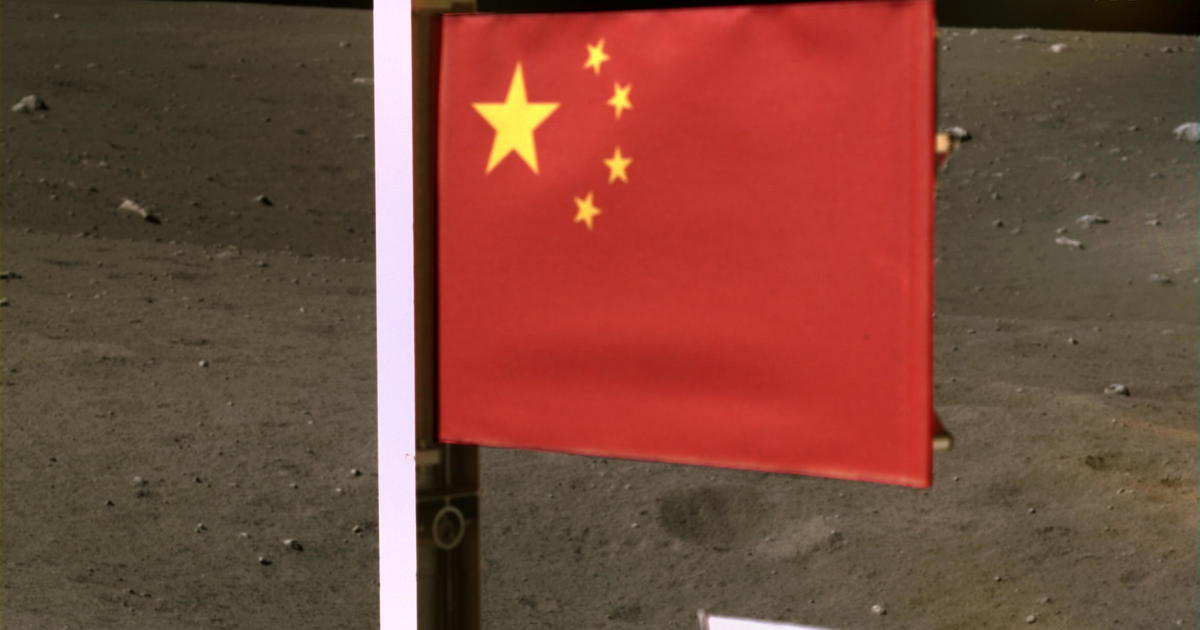News
How Trump can — and can’t — spend his Save America PAC funds
Trump makes multiple false claims in first rally since election loss
COVID-19 becomes top killer in U.S. as hospitals fill up
Study finds diplomats in Cuba likely targeted by microwave energy
U.S. ends 5 cultural programs with China in further escalation
Judge orders restoration of DACA, opens program to new applicants
What another stimulus deal could mean for jobless benefits
CDC recommends “universal mask wearing” outside home
First subsurface asteroid samples delivered to Earth
2020 Elections
Wisconsin high court won’t let Trump campaign bypass lower court
Election 2020: Full Coverage
Mark Kelly sworn in as Democratic senator from Arizona
Georgia elections official rebukes Trump after threats to workers
Barr says Justice Department has no evidence of widespread fraud in election
Biden introduces economic team, telling Americans “help is on the way”
Obama narrates new Jon Ossoff ad ahead of Georgia runoff
Shows
Live
LIVE
More
Search
Search
Live
Watch CBSN Live
Space race heats up
Space race heats up
08:20
A Chinese spacecraft lifted off from the moon Thursday night with a load of lunar rocks, the first stage of its return to Earth, the government space agency reported. Chang’e 5, the third Chinese spacecraft to land on the moon and the first to take off from it again, is the latest in a series of increasingly ambitious missions for Beijing’s space program, which also has a orbiter and rover headed to Mars.
Right before the ascent vehicle lifted off, the lander unfurled what the space administration called the first free-standing Chinese flag on the moon. The agency posted an image — apparently taken from the lander — of the ascend vehicle firing its engines as it took off.
China’s national flag is seen unfurled from the Chang’e-5 spacecraft on the moon, in this handout image provided by China National Space Administration (CNSA) December 4, 2020.
CNSA
The spacecraft “unfolded the five-star red national flag, a genuine one made from fabrics, marking a first in the country’s aerospace history,” state media said.
The Chang’e 5 touched down Tuesday on the Sea of Storms on the moon’s near side. Its mission: collect about 4 pounds of lunar rocks and bring them back to Earth, the first return of samples since Soviet spacecraft did so in the 1970s. Earlier, the U.S. Apollo astronauts brought back hundreds of pounds of moon rocks.
The landing site is near a formation called the Mons Rumker and may contain rocks billions of years younger than those retrieved earlier.
This image provided by China National Space Administration shows the ascender of Chang’e-5 spacecraft blasting off from the moon surface on Thursday, Dec. 3, 2020.
/ AP
The ascent vehicle lifted off from the moon shortly after 11 p.m. Beijing time Thursday (1500 GMT) and was due to rendezvous with a return vehicle in lunar orbit, then transfer the samples to a capsule, according to the China National Space Administration. The moon rocks and debris were sealed inside a special canister to avoid contamination.
It wasn’t clear when the linkup would occur. After the transfer, the ascent module would be ejected and the capsule would remain in lunar orbit for about a week, awaiting the optimal time to make the trip back to Earth.
Chinese officials have said the capsule with the samples is due to land on Earth around the middle of the month. Touchdown is planned for the grasslands of Inner Mongolia, where China’s astronauts have made their return in Shenzhou spacecraft.
Chang’e 5’s lander, which remained on the moon, was capable of scooping samples from the surface and drilling 2 meters (about 6 feet).
While retrieving samples was its main task, the lander also was equipped to extensively photograph the area, map conditions below the surface with ground penetrating radar and analyze the lunar soil for minerals and water content.
Chang’e 5 has revived talk of China one day sending astronauts to the moon and possibly building a scientific base there, although no timeline has been proposed for such projects.
China launched its first temporary orbiting laboratory in 2011 and a second in 2016. Plans call for a permanent space station after 2022, possibly to be serviced by a reusable space plane.
While China is boosting cooperation with the European Space Agency and others, interactions with NASA are severely limited by U.S. concerns over the secretive nature and close military links of the Chinese program. On Tuesday, Thomas Zurbuchen, NASA’s science director, tweeted a congratulatory message to China after the spacecraft landed on the moon.
Congratulations to China on the successful landing of Chang’e 5. This is no easy task. When the samples collected on the Moon are returned to Earth, we hope everyone will benefit from being able to study this precious cargo that could advance the international science community. pic.twitter.com/2xoKouf3dq
— Thomas Zurbuchen (@Dr_ThomasZ) December 1, 2020
China is executing an incremental approach to its moon program, launching a series of increasingly complex robotic spacecraft to develop and test the propulsion, guidance, navigation and landing systems needed for long-term exploration.
The Chang’e 1 and 2 missions successfully reached lunar orbit in 2007 and 2010 respectively, followed by the Chang’e 3 lunar lander in 2013 and Chang’e 4, which landed on the far side of the moon in 2019. Chang’e 5 is the first of two planned sample return missions and China’s most ambitious moon mission to date.
Bill Harwood contributed to this report.
Be in the know. Get the latest breaking news delivered straight to your inbox.
View CBS News In
CBS News App
Safari
